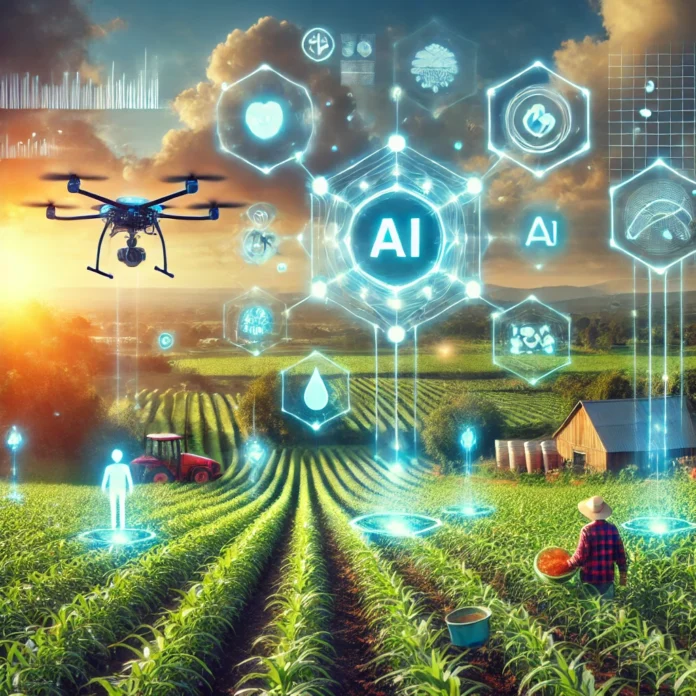Global food security remains one of the most critical challenges of the 21st century. With the global population projected to reach 9.7 billion by 2050, the demand for food is set to increase dramatically. Simultaneously, climate change, dwindling natural resources, and supply chain inefficiencies threaten food production. Artificial Intelligence (AI) is emerging as a transformative solution, helping to combat hunger by optimizing agricultural practices, reducing waste, and enhancing resource management.
AI’s Role in Modern Agriculture
AI is revolutionizing agriculture through precision farming, predictive analytics, and automation, enabling farmers to produce more food with fewer resources.
1. Precision Agriculture
AI-powered tools analyze data from soil sensors, drones, and satellites to provide farmers with real-time insights into crop health, soil quality, and weather conditions.
- Applications like Taranis and CropX use AI to monitor fields, detect pests or diseases, and recommend targeted treatments, reducing the overuse of fertilizers and pesticides.
- These technologies enable farmers to make data-driven decisions, maximizing yields while minimizing environmental impact.
2. Predictive Analytics
AI systems use historical data and machine learning models to forecast crop yields, predict pest outbreaks, and anticipate weather patterns.
- The Climate Corporation employs AI to help farmers plan planting and harvesting schedules, mitigating risks associated with climate variability.
- Predictive analytics also assist policymakers in preparing for potential food shortages, ensuring timely intervention.
3. Automation and Robotics
AI-driven robots are transforming labor-intensive farming practices. Autonomous machinery can plant, water, and harvest crops with high efficiency.
- Companies like Blue River Technology have developed AI-powered weed control systems that identify and remove weeds without damaging crops, reducing labor costs and conserving resources.
AI in Reducing Food Waste
Approximately one-third of all food produced globally is wasted. AI is helping address this issue at every stage of the supply chain:
- Supply Chain Optimization: AI platforms like ClearMetal enhance logistics by predicting demand, improving inventory management, and ensuring timely delivery of perishable goods.
- Quality Control: AI-powered image recognition systems, such as those developed by ImpactVision, analyze the freshness and quality of food during processing, reducing spoilage.
Improving Accessibility to Food
AI technologies are also enhancing food accessibility for vulnerable populations. For example:
- E-commerce platforms use AI to match surplus food from suppliers with charities and food banks, reducing hunger while minimizing waste.
- Startups like BenevolentAI employ AI to research and develop affordable, sustainable alternatives to traditional food sources, such as lab-grown meat or plant-based proteins.
Challenges and Ethical Considerations
Despite its potential, AI in agriculture faces challenges:
- Digital Divide: Small-scale farmers in developing regions may lack access to the infrastructure and knowledge needed to adopt AI technologies.
- Data Privacy: The use of extensive data from farms raises concerns about ownership and misuse of information.
- Environmental Risks: Over-reliance on AI-driven intensive farming could inadvertently harm ecosystems if not managed responsibly.
Conclusion
AI is a powerful ally in the fight against hunger, offering innovative solutions to enhance agricultural productivity, reduce waste, and improve food distribution. By addressing the challenges of accessibility and ethical use, AI has the potential to create a more sustainable and food-secure world, ensuring that no one goes hungry in the face of growing global demand.





